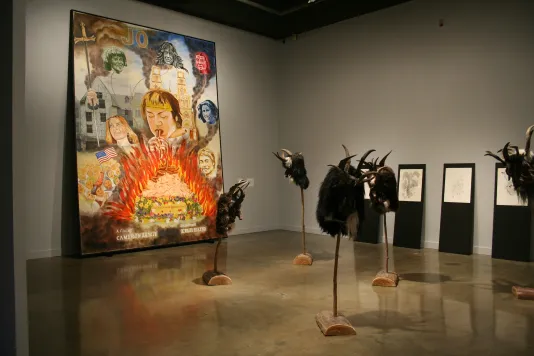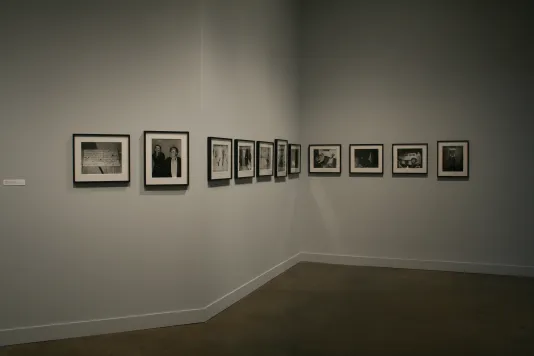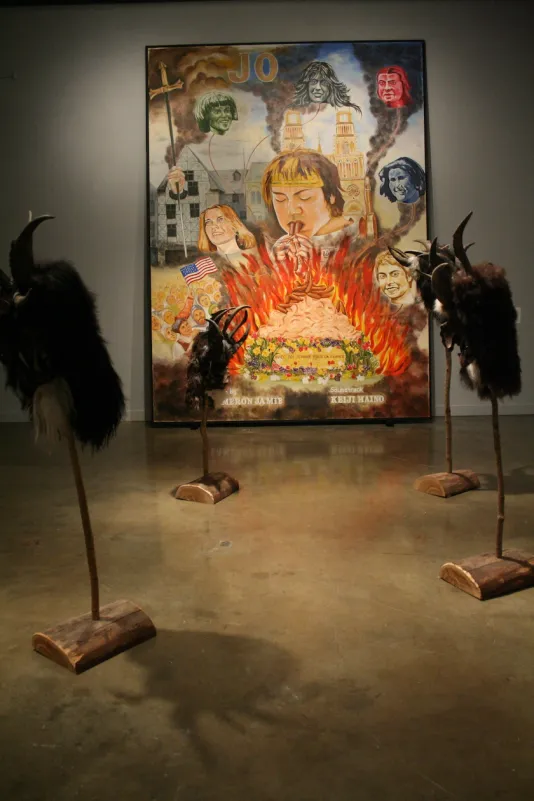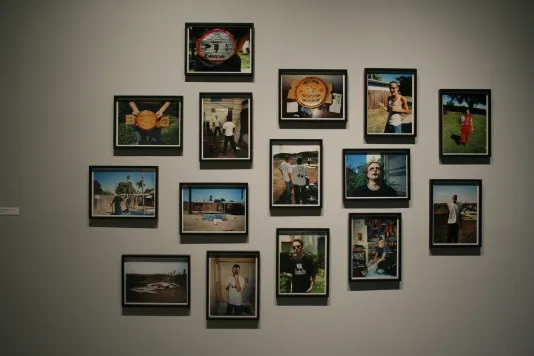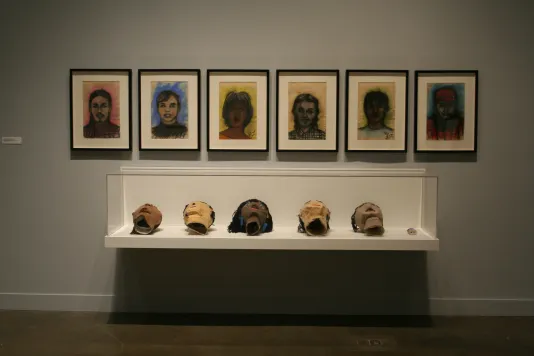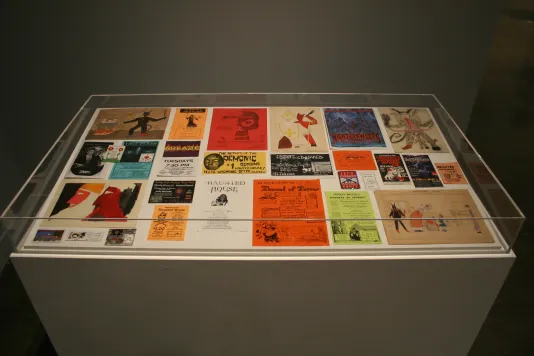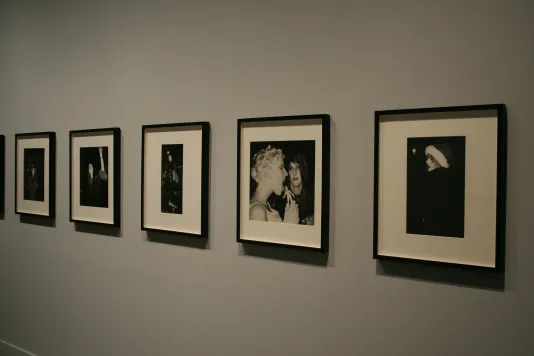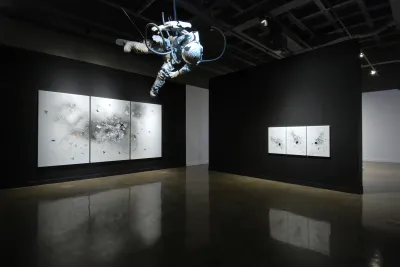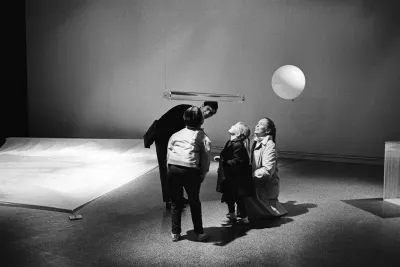Installation view, Cameron Jamie, MIT List Visual Arts Center, 2007.
Cameron Jamie
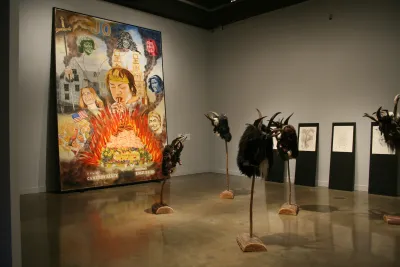
The MIT List Visual Arts Center (LVAC) is pleased to present an exhibition featuring the work of Cameron Jamie.
The exhibition presents works ranging from drawings to sculptural objects to films created over the past 20 years, including examples of investigation around the notion of portraiture, self-representation, and collective identity, many of which have never been shown together. Also featured is the artist’s acclaimed film trilogy (BB, Spook House, and Kranky Klaus) along with selections from his photographic studies, ephemera, and archival material collected during the production of the films. Cameron Jamie, the first U.S. solo museum exhibition featuring the work of the artist, was originally organized by Philippe Vergne, deputy director and chief curator at the Walker Art Center, Minneapolis, Minnesota, in close collaboration with the artist, Cameron Jamie.
Cameron Jamie has created a body of work centering around film and performance that documents various fringe rituals, including backyard teenage wresting, Halloween spook houses, eating contests, and a winter visitation by mythical beasts. Working across materials and media, he frequently collaborates with street-portrait artists and celebrity impersonators as well as musicians such as The Melvins and Japanese guitarist Keiji Haino. The resulting work conflates investigative strategies, autobiography, mythologies, vernacular traditions, and urban folklore to examine contemporary life, our fascinations with the outlandish, and our need for escapism - what one critic has identified as “backyard anthropology” or what the artist calls, “social theater.”
In 1998, Los Angeles-born Jamie began an objective examination of the backyard-wrestling phenomenon in Southern California, which led him into an ongoing investigation centered on folkloric reenactments, horror amusements, or what he describes as “the different types of ritualized social theatrics in America.” Shot in black-and-white Super 8, BB (2000), part of the Walker Art Center’s collection, focuses on teenagers in backyards across the San Fernando Valley as they jump off roofs and throw chairs at each other, reinventing, out of adversity, the codes of mass entertainment wrestling.
The second film, Spook House (2003), is set in a working-class suburb of Detroit as residents construct haunted houses before Halloween. With the eye of an anthropologist, Jamie documented residents transforming homes, lawns, and abandoned structures into spook houses and cemetery-like settings, trapped between good and evil, moral and immoral, in settings reminiscent of Danté.
The final film of the trilogy, Kranky Klaus (2002-2003), chronicles the pagan celebration of Krampus in a snowbound village of Salzburg’s Bad Gastein Valley in central Austria, where each year on December 6, villagers congregate in homes awaiting a cortege of mythical elves and men dressed as horned, hairy beasts led by an elder bishop. Their performed grotesque ritual of “accepted” violence provides the cathartic experience of relieving daily abuses.
The humanistic quality of Cameron Jamie’s work, his collaborative practice, and his deliberate long-term engagement with his subjects bring to mind the tactics of “cine-ethnography” introduced by ethnographic filmmaker Jean Rouch (1917-2004), a pioneer of cinema vérité. Immersing himself in peripheral elements of contemporary culture, Jamie becomes an ethnographer in search of alternative strategies for understanding and interpreting the layers of our knowledge and cultural structures.
About the Artist
Jamie has shown his work at major contemporary art venues and at film festivals in the United States and Europe. Most recently he participated in Whitney Biennial 2006: Day for Night at the Whitney Museum of American Art, New York, and La Biennale di Venezia, Festival Internazionale del Teatro. His work has been included in group exhibitions at Cologne Kunstverein; Museum voor Hedendaagse Kunst Antwerpen, Antwerp; Musée du Louvre; Fondazione Sandretto Re Rebaudengo, Torino; Neue Galerie am Landesmuseum Joanneum, Graz; Centre Georges Pompidou, Paris; and Museo Nacional de Arte Reina Sofia, Madrid. Jamie is also represented in the Walker Art Center’s collection and his work was included in its 2003 exhibition How Latitudes Become Forms: Art in a Global Age.
